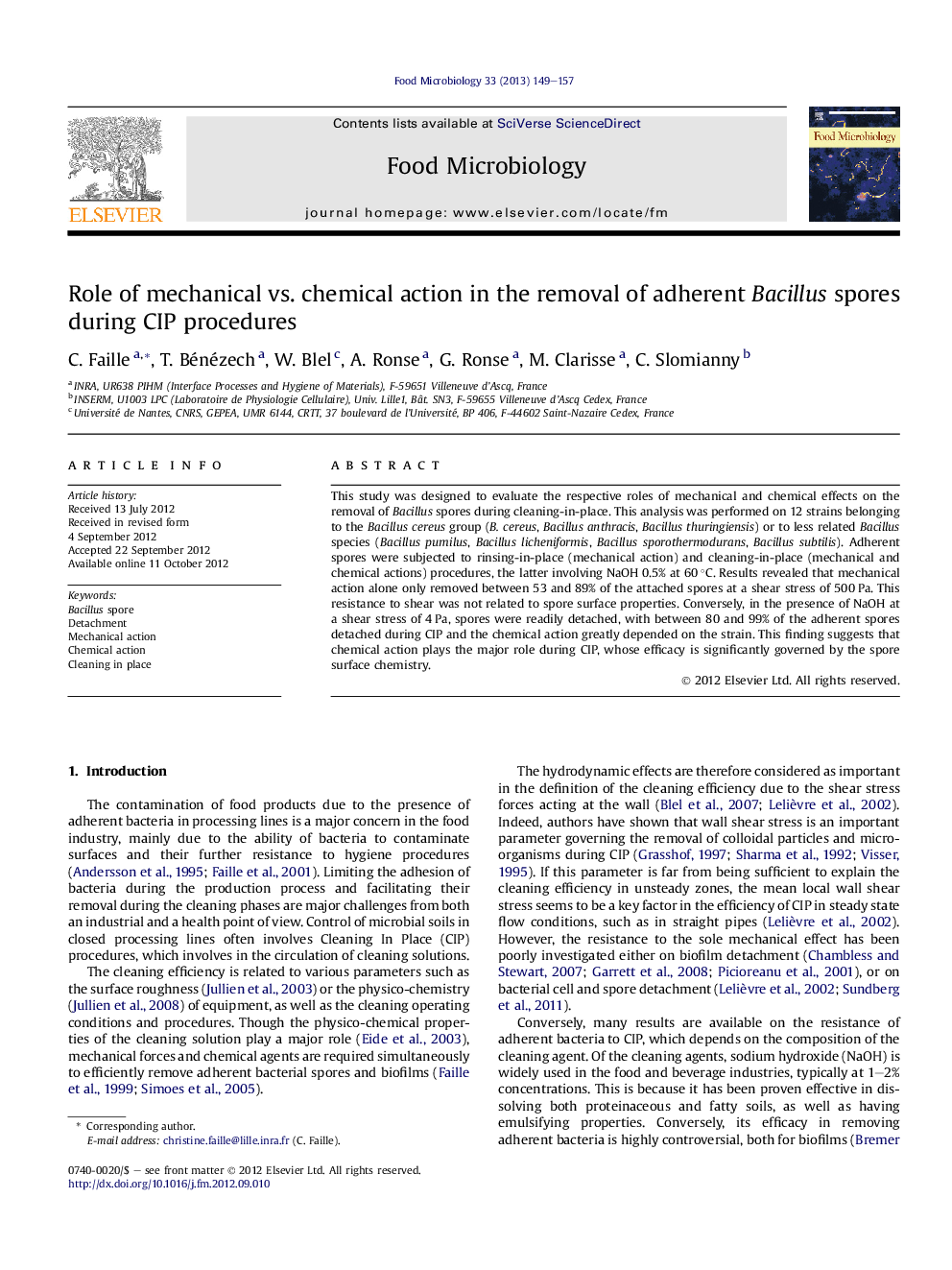| Article ID | Journal | Published Year | Pages | File Type |
|---|---|---|---|---|
| 4363018 | Food Microbiology | 2013 | 9 Pages |
This study was designed to evaluate the respective roles of mechanical and chemical effects on the removal of Bacillus spores during cleaning-in-place. This analysis was performed on 12 strains belonging to the Bacillus cereus group (B. cereus, Bacillus anthracis, Bacillus thuringiensis) or to less related Bacillus species (Bacillus pumilus, Bacillus licheniformis, Bacillus sporothermodurans, Bacillus subtilis). Adherent spores were subjected to rinsing-in-place (mechanical action) and cleaning-in-place (mechanical and chemical actions) procedures, the latter involving NaOH 0.5% at 60 °C. Results revealed that mechanical action alone only removed between 53 and 89% of the attached spores at a shear stress of 500 Pa. This resistance to shear was not related to spore surface properties. Conversely, in the presence of NaOH at a shear stress of 4 Pa, spores were readily detached, with between 80 and 99% of the adherent spores detached during CIP and the chemical action greatly depended on the strain. This finding suggests that chemical action plays the major role during CIP, whose efficacy is significantly governed by the spore surface chemistry.
► Mechanical action (shear stress) is poorly effective even at very high shear stresses in detaching adherent Bacillus spores. ► Chemical action plays a major role during CIP procedures in removing adherent spores even at low shear stresses. ► The detachment efficacy during CIP is probably largely influenced by the spore surface susceptibility to chemicals.
